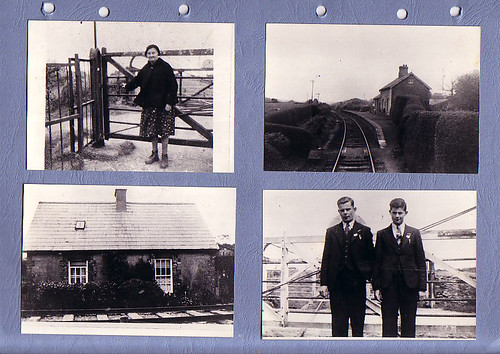A few nice southern living images I found:
The Great Southern Railway

Image by Steve Bowbrick
About twenty years ago my Mum and Dad retired to a railway crossing keeper’s cottage in West Cork. Here are some more old pics of the house and the area and here’s one of my Dad’s notes to his grandchildren telling them all about it:
"Hi my lovelys: As you must know some boys and ALL men love trains, so this is to be story about trains.
To start with, the main railway line was built between Cork City and Skibbereen in about 1870 – that’s right: 136 years ago. Well in 1890 it was decided to extend the line from Skibbereen down to Baltimore. This piece is only about eight miles long and the Skibbereen to Baltimore Extension on the Great Southern Railway was opened in 1893.
Now the real point of this story! The line runs very nearly along the River Ilen and there are no hills or valleys, so they are no steep gradients or large bridges. There were, however, a good number of small country lanes which crossed the route of the line. At some of these lanes a small bridge was built, but most – nine to be exact – were provided with a level crossing (as they were called) consisting of two large gates stretched across the line, or the lane, as the need arose to stop the road traffic or to allow it to pass when the train had gone by. Naturally there had to be someone to open or close the gates. At each crossing the railway company built a small cottage and installed in it the family of a railway worker – perhaps a driver or maintenance man or a worker at a station.
This is were our little house comes into the picture. There was a crossing over the lane just by our house. It was called Creagh number 1 (and Creagh number 2 was a little way further along the line). So a cottage was built for the railway family, and the wife of the railway worker became the crossing keeper. The cottage was number 1524. For three generations until 1961 when the railway was closed the cottage was occupied by the Hennesy family. Each new Mrs Hennesy became the crossing keeper. When the railway closed the family moved away and eventually we bought the old cottage and turned it into the lovely house we now have.
Of course a station had to be built at Baltimore, and in addition there was one built at Creagh. The building at Baltimore is still there and is a diving school. Creagh station is just across the field from our house, and if you go there you can still see the platform.
We are lucky to have a few photos of the building and the railways, so I am attaching some to this letter. In the first picture you can see the last Mrs Hennesy closing the gate after the very last train on Good Friday the 31st March 1961. The next picture is of the station at Creagh, the third is our cottage with the railway running right past the front door, and finally Mrs Hennesy’s two sons who both became engine drivers.
The next page is events at Creagh station on the last running day with a ticket for a Day Excursion Creagh to Baltimore and return. Then there are three pictures of the old cottage. You can see how small it was. At one time there were seven people living there. And lastly there is a shot of Baltimore station with trains standing at the platform, and an aerial picture of Skibbereen showing the station and the West Cork Hotel which is still there. The picture of Skibbereen was probably taken in about 1900."